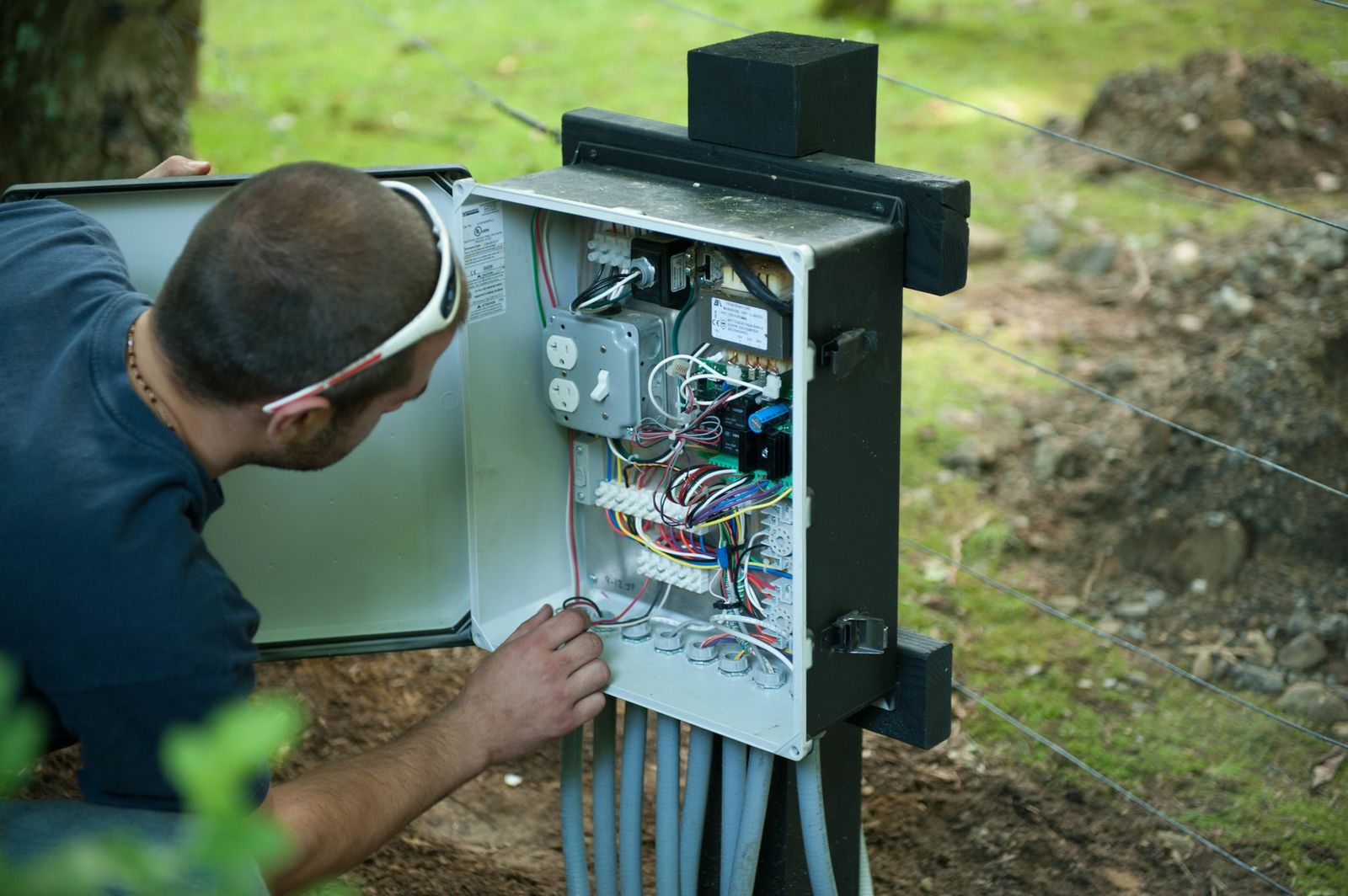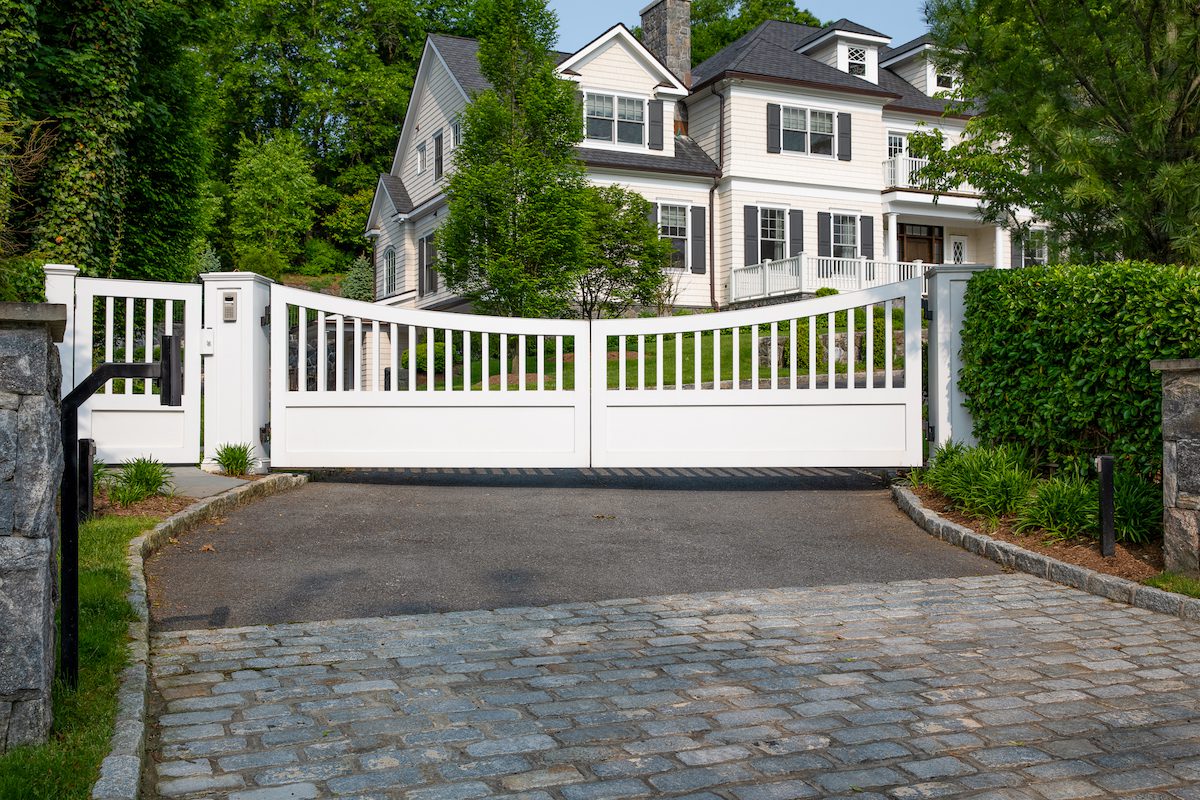An automatic gate can be the crown jewel of your property. But unlike a jewel, which just needs to look beautiful, automatic gates also need smart technology. Fortunately today there are an array of opening mechanisms and safety and security features to consider — enough to allow exacting customers to pick a gate that functions exactly the way they want it to.
Here’s our guide to the different automatic gate opening mechanisms and common safety and security add-ons that can come with them.
How Automatic Gate Openers Work
There are two basic types of gate operators: electromechanical and hydraulic.
Electromechanical operators typically use a screw drive style operation, where an internal threaded rod spins, causing the motor to extend and contract, which then pushes the gate open or closed. Other types of operators, such as sliding gates, typically use a gear mechanism to move a chain or rack and pinion which in turn moves the gate. And barrier arms can use a lever based system to operate.
Hydraulic operators are typically more powerful, and push hydraulic fluid through a closed loop system which turns a gear assembly or pushes a ram piston to open or close the gate.
Whichever system a gate opener uses, all automatic gates operate through the use of some sort of sensor that detects when a vehicle approaches. When the sensor is triggered, a signal is sent to a mechanism that opens the gate.
Of course, from there it gets more complicated. The sensors can use radar, infrared, or optical scanners to detect motion; they can also be activated by detecting the metal of an approaching vehicle. The sensors can be set to open the gate automatically whenever someone exits or approaches, or, through any number of security mechanisms, they can be set to require additional authorization for entry, but not for exit, or for both, etc.
There are a whole world of options for how you want your automatic gate to operate. Let’s dive into the details.
Sliding gate opener mechanism in operation
Electric motors in gate operation
Most gate operators are normally classified as high voltage (120V or 240V) or low voltage (24V). Electromechanical operators will typically operate on 24V or 120V, and can have integrated battery backup units, while hydraulic operators will typically operate with 120V or 240V, although there are some low voltage hydraulic models as well.
Solar power is sometimes available as a power source, though it’s generally not as reliable as wired power. At Tri State Gate, the only solar-powered systems we install are for gates that open and close only a few times per day or that open just once in the morning then close at night.
Gates can also be equipped with battery backup systems so that, in the event of a power outage, the gates will lock open and remain open until power is restored.
Sensors and safety mechanisms.
Most automatic gates come with vehicle detection loops that are installed in the driveway and used to trigger the gate when a vehicle (such as a car, truck, or motorcycle) approaches. There are typically three loops installed on a standard system:
An Entry Loop – This sensor is installed on the outside (the street side) of the gate, and will allow a car to pull up to the gate and have it open automatically.
An Exit Loop – This sensor is on the inside of the gate and allows vehicles to exit as they pull up to the gate.
A Safety Loop – This sensor is installed close to the gate to help prevent it from closing on a vehicle that’s stopped or parked too close.
When a customer has a telephone entry system, the entry loop is typically programmed to either be off all the time, or off during certain times of the day, so that a person would need to use the telephone entry system (call box) to gain access. When this entry loop is turned off, the gate is in “security mode.”
The exit loop and the safety loop are almost always left on at all times. Allowing vehicles that are already inside the property to leave is very rarely a security concern, so the exit loop is almost always left active. (Though occasionally, at highly secure locations where leaving needs to be restricted, the exit loop can be set to “security mode” as well. This is useful for certain sorts of commercial properties, or if a homeowner has, say, a car collection that they need to protect from trespassers).
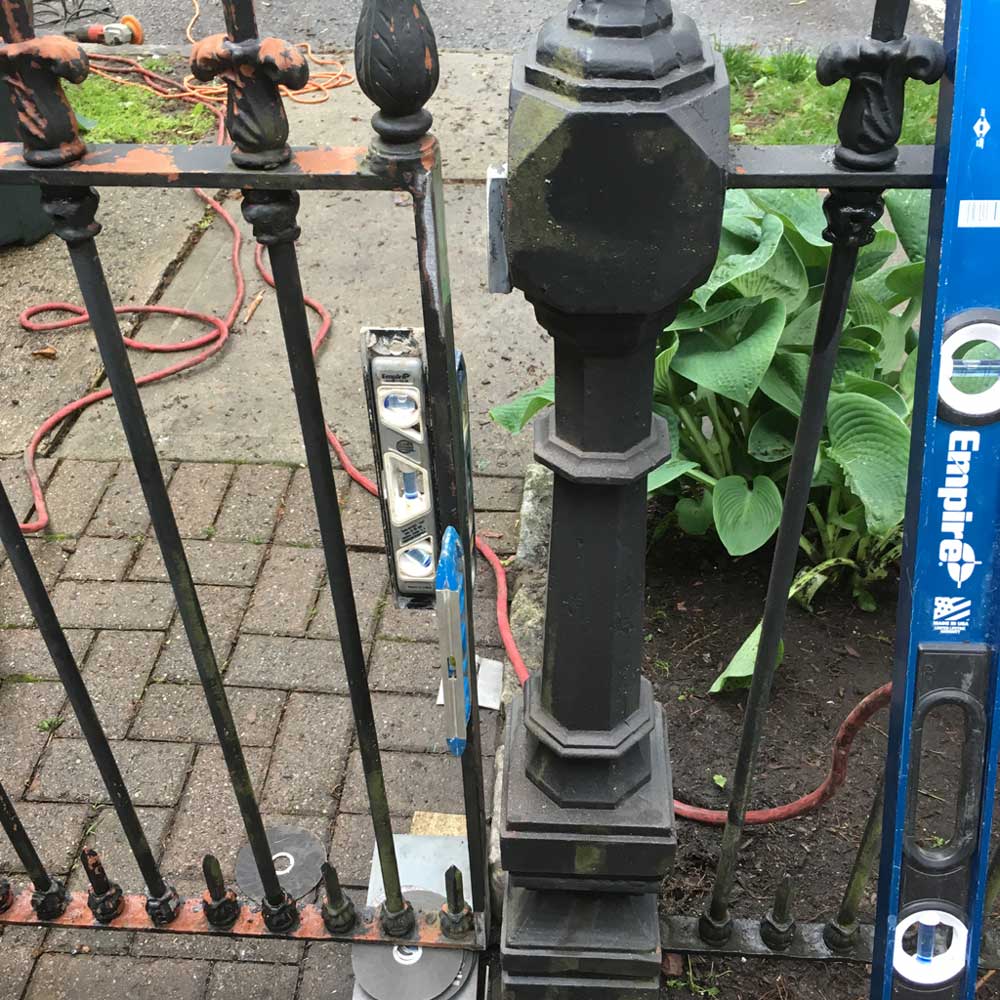
Types of Automatic Gate Openers
Let’s consider some of the most common types of automatic gate openers.
Ram Gate Openers
Ram gate openers — often just referred to as above ground hydraulic gate operators — are used for swing gates. Typically high voltage (120 or 240V), these operators are more powerful and typically last longer than their non-hydraulic counterparts.
They typically have a long, thin motor body mounted on each of the two gate pillars with a long metal arm that extends and retracts attached to the interior side of the gate. Retracting the arm opens the gate and extending it closes it back up.
One drawback of these operators is that they’re visible on the gate, and if they’re installed on stone columns or wood- or composite-wrapped steel columns, you need to remove a small section of column for the arm to open into which can sometimes detract from the aesthetic.
Linear Screw Type Automatic Gate Openers
Linear screw openers look very similar to ram gate openers, except they don’t have a piston extending out from the motor body. Instead the motor turns a threaded shaft which screws a bracket that’s mounted on the gate back and forth, causing the gate to open or close.
These operators are generally less expensive than ram gate operators, but they’re not as powerful and they have more moving parts so they usually don’t last as long. Because they’re less powerful than the hydraulic motors, they’re a good option for very lightweight style gates (such as premade aluminum gates, for example).
Like ram gates, they’re visible from the inside and have the same visual drawbacks when attached to stone or wood- or composite-wrapped steel columns.
Sliding Gate Openers
Rather than swinging a gate open 90 degrees on a hinge, like the two systems described above, sliding gate openers command a gate by sliding it parallel to the walls or fencing on either side of the driveway.
Typically high voltage, sliding gates usually use a chain driven operator or a rack and pinion or rack and drive style operator. They aren’t available in an underground option, so the motor will always be visible, and there are different options available based on the size and weight specifications of the gate and other considerations such as opening and closing speed.
Usually they open via the movement of a single panel, although sometimes they operate via a two panel system in which one panel slides open to the left and the other to the right. Entry level sliding gates have an exposed roller system, but more robust systems will feature a heavy duty hidden roller system, reducing pinch points and helping prevent any sag over large driveway widths.
Overhead Gate Openers
Overhead gate openers operate roll-up style doors, including your typical residential garage door, as well as heavier duty commercial doors. Different versions of these motors are able to open and close rapidly, or are significantly more sturdy than a typical motor and can control very tall, wide, or heavy overhead doors.
Barrier Arm Gate Openers
Primarily used for commercial applications, such as parking lots, toll booths, and railroad crossings, barrier arms typically swing upwards to open (rather than inwards or outwards) on a 90 degree angle to allow vehicles to pass. They’re very reliable and can open and close very quickly — some take just over a second. They’re used when you want to limit vehicular access but pedestrian access isn’t much of a concern.
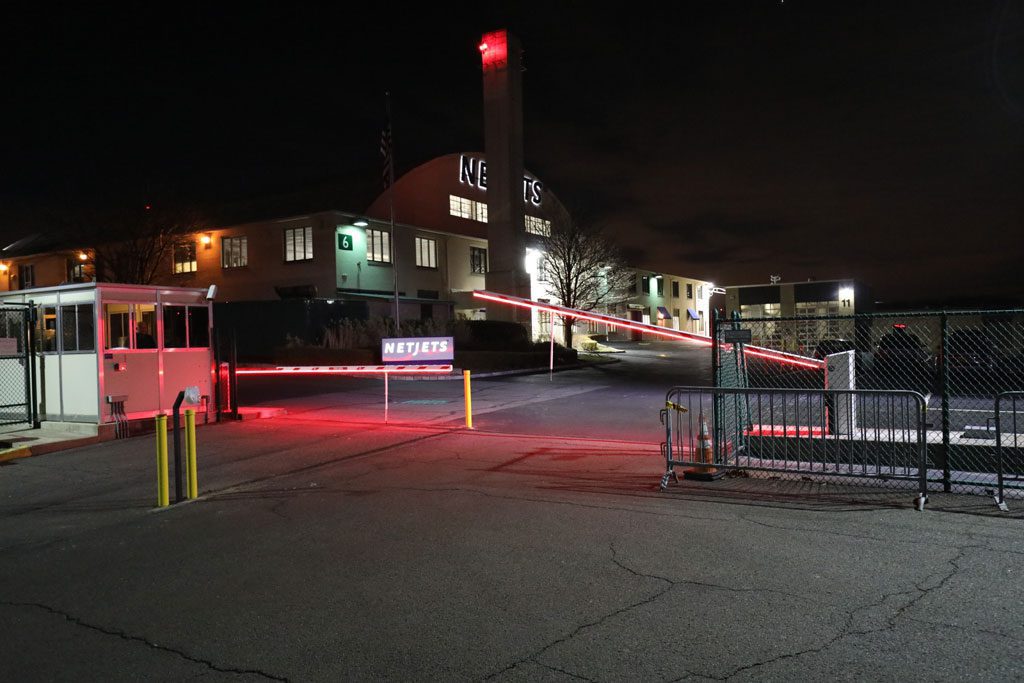
Underground Gate Openers
Typically hydraulic, underground gate openers operate from inside foundation boxes placed underground at the hinges of a swing gate. A motor arm extends out from the foundation box and attaches to the underside of the gate. The motor arm rotates to swing the gate open or closed.
Underground openers are at the top end of the market for swing gates. They’re very powerful, robust systems: with the exception of only a few above ground hydraulic systems used for exceptionally heavy gates, underground systems are the most powerful. They’re also very discrete: the mechanism is almost entirely hidden from view on either side of the gate. However, they also generally take the most work to install because they need to be dug into the ground — something that can be more or less difficult depending on the type of terrain.
Features to Consider When Shopping for Automatic Gate Openers
The first thing to consider when you’re purchasing an automatic gate opener is what sort of gate you have or want: swinging, sliding, or a barrier arm. This will dictate the type of motor you choose. The next thing to consider is the type of application: is the gate residential or commercial? How many times will it open and close per day? What material is the gate made from (i.e. how much does it weigh, how big is it, etc.) and how will these affect foundational mechanical requirements? The final considerations are aesthetics and cost.
Here are some of the major options and features to look at when you’re considering automatic gate openers.
Manual Release
All automatic gates come with some form of manual override mechanism in the event of a power outage or if the system breaks. These manual releases are typically activated by a key, and override the drive mechanism of the operator, allowing the gates to be opened by hand. However, some manual releases are easier to access and operate than others. Make sure to find out how to release your gate manually in case of an emergency, and make sure that the mechanism isn’t too complicated to prevent using it if necessary.
Auto-Reverse mechanisms
Our systems are typically installed with three underground vehicle detection loops — one at the entry that detects vehicles as they approach the driveway, one on the other side of the gate that detects vehicles as they’re leaving the property, and one just past the gate itself that can detect when a vehicle is in the way, obstructing the gate.
This last loop — called the safety loop — can be programmed to stop or automatically reverse a gate that’s closing if there’s a vehicle in the way. It’s an important safety mechanism for drivers as they interact with the automated system.
Slide gates will typically feature an auto-reversing safety edge installed on the leading and trailing ends of the gate. If the edge makes contact with something while the gate is in motion, the gate will either stop, or will reverse, helping to protect pedestrians and vehicles.
Infrared beams and other obstruction-sensing systems
Infrared and microwave sensors can also provide an additional backup to make sure that people or vehicles aren’t in the way as a gate is closing. Active infrared sensors are continuously monitored by the gate system and will send a signal whenever the beam is disrupted by an object moving through its path. Microwave sensors emit microwaves that reflect off people or objects within the gate’s range of motion.
Power Options & Backup
Automatic gates are typically operated by electricity or solar power. Even for homes with a whole-house generator installed, we typically recommend having a battery backup so that, in the event the generator fails to start, the gates will open and residents won’t have to manually bypass the gates.
There are also advanced battery backup systems that will allow gates to open and close a limited number of times during an outage so that the gate can be left shut during an outage.
Gate Opener Speed
Swing gates typically take about 12 seconds to open or close. Barrier arms can open in as little as 1.2 seconds. Slide gates will typically travel about 1 foot per second (so a typical 14 ft wide gate would take 14 seconds to open or close), although there are different operators that can move much quicker if required (up to 3 or 4 feet per second). This is why we put the exit sensor further up the driveway, so that the gates start to open as the car is approaching, so you don’t have to wait too long by the time you get to the gate, it’s almost all the way open. Same thing with using a transmitter as you approach the gate, it’s already starting to open, so when you actually get to the gate it’s almost fully open.
When you’re considering the speed with which your gate opens, it’s important to find a compromise between convenience and safety. We typically place entry and exit sensors far enough away that they’ll signal a gate to begin opening in advance before a driver pulls up to the gate in order to eliminate any time spent waiting.
Demonstration of sliding gate opener speed
Smart Features and Connectivity
At Tri State Gate, we offer an array of advanced smart security and connectivity features to enhance the security of your gate. Both wired and wireless digital keypads allow residents and visitors to enter only by using a code — and multiple codes can be programmed so that one can be changed or eliminated without affecting everyone else. These codes can also be set to work only at certain times of day so that access is restricted for anyone except residents.
More robust security options include telephone entry systems that call the homeowner when someone seeks access — the latest systems are app-based and feature an integrated security camera viewable on your mobile device. Fingerprint, Bluetooth, RFID, and even license plate recognition technology can all provide advanced protection.
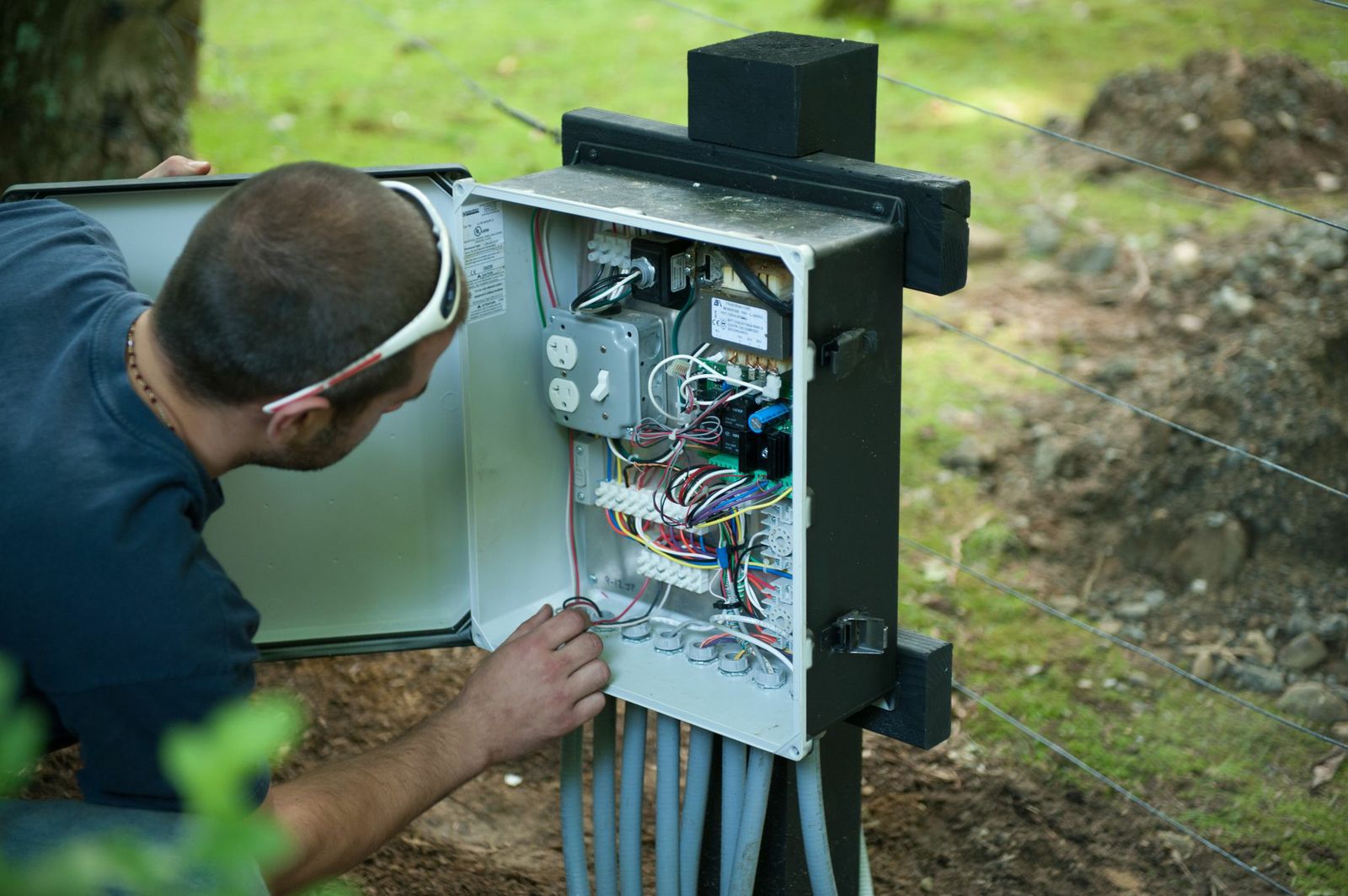
Weight and Size Limitations
Every driveway is different and the surrounding terrain and landscaping will always play a part in determining what gate works best for your property. Heavier gates need more powerful systems to operate them and can lead to more wear and tear on the motor, but there really aren’t any limits to how heavy your gate can be.
Durability and Weather Resistance
Different materials — such as wood, metal, or custom composites – and mechanisms have varying levels of durability and weather resistance. Sliding gates, for example, work well for windy areas because the parallel movement is less susceptible than swing gates to getting battered by gusts of wind. Wrought iron gates are known for their durability and can last generations with proper upkeep. See our blog to decide which materials are best suited for your gate.
Automatic Gate Openers That We Trust
There are over 35 different brands of automatic gate opening equipment makers on the market, but there are only a few that we truly trust for our projects. Some of our preferred manufacturers are FAAC, BFT, HySecurity, and Doorking.
Installation Considerations for Automatic Gate Openers
Here are some other important installation requirements to consider.
Electrical Requirements
At Tri State Gate, we typically recommend running a 240 volt, four wire, 12 gauge electrical service to our gate control box, with a 20 amp breaker. This would be installed by a licensed electrician. Our technicians will then convert this to the required voltage for the gate system (120V, or low voltage).
We also typically suggest running four CAT-6 or better cables to the gate area for internet, connection to the home alarm system, and for spare wires (this way if anything goes wrong in the future, there are spare cables to quickly fix the problem). Also, fiber optic cable is recommended for the internet connection if the run is over 300 feet long.
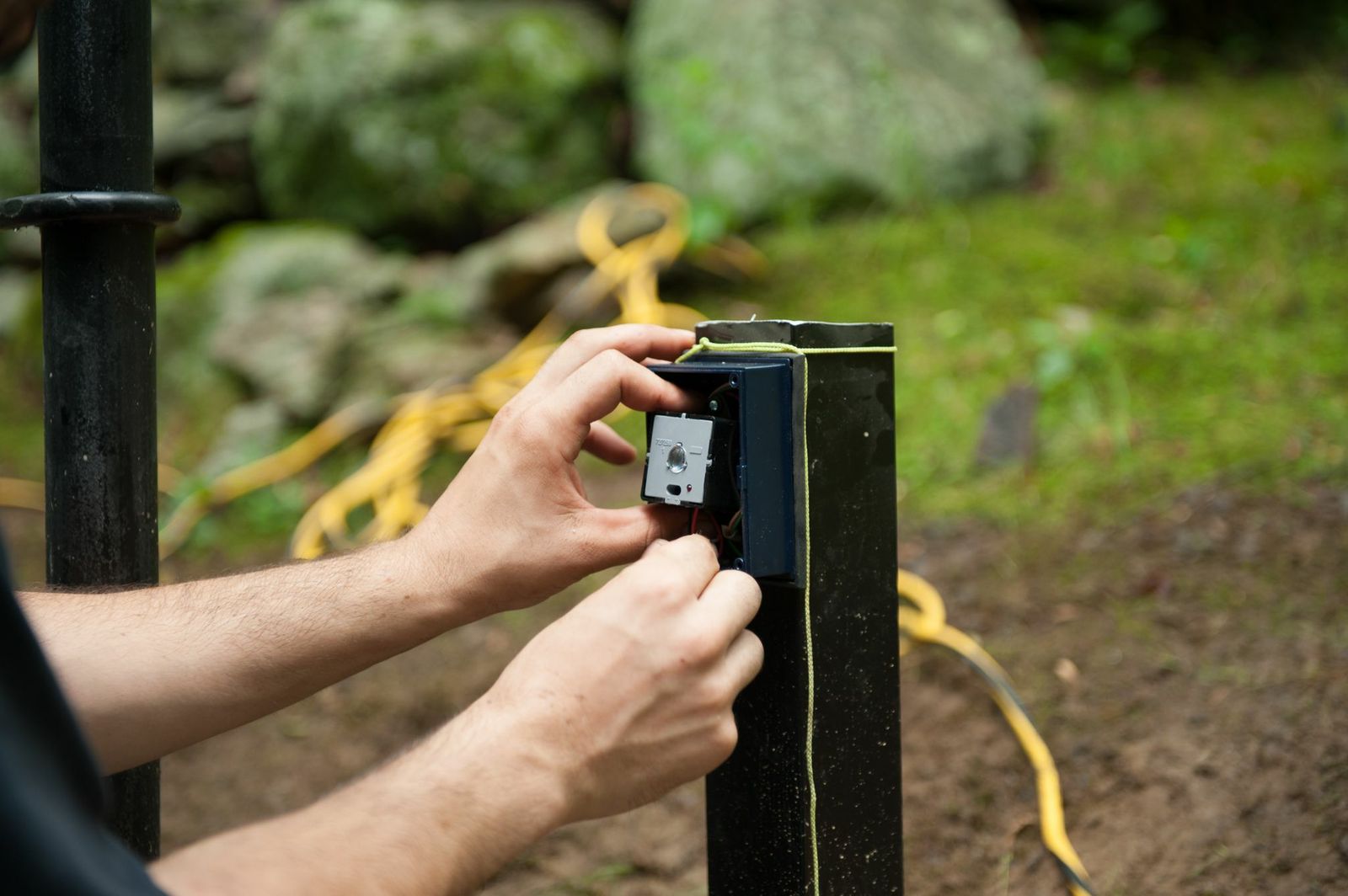
Physical Space and Alignment
Certain opening mechanisms are better suited to particular spaces. Sliding gates are excellent if you have limited driveway space, but they have very particular space requirements on the sides to allow the gate to retract. These systems usually need 1.5 times the width of the driveway for the gate to retract (so 30 feet for a 20 foot driveway). Swing gates are a classic choice, but they require enough room on the interior of the property to allow the gates to open and close fully without obstruction. That means at least half the driveway width (10 feet for a 20 foot driveway) must be available in the direction that the gate swings open.
Expert Advice and Support for Your Driveway Gate
Whether you’re looking for a little extra home security, you want advanced protection for your property, or you want a one-of-a-kind bespoke entry way that’ll make a statement, Tri State Gate has been designing, installing, and repairing the finest automated driveway gates in the greater New York area and beyond for over 25 years.
Call us today at 914-244-0018 or contact us online to book a free consultation.

